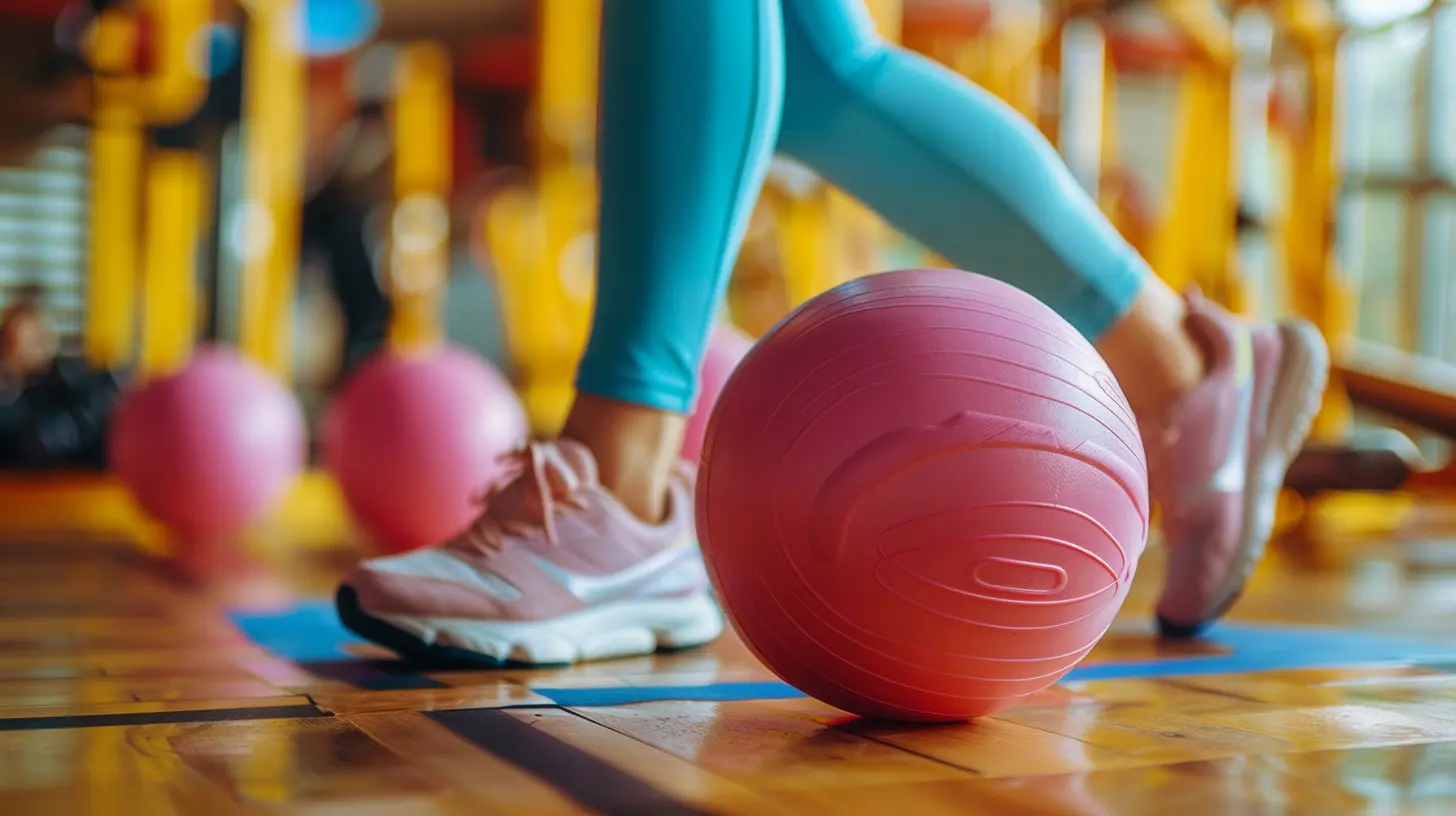A Guide to Safe Exercise During Pregnancy
8 June 2025
Pregnancy is a beautiful, life-changing journey, but let’s not sugarcoat it—it’s also a wild ride full of hormonal mood swings, cravings that come out of nowhere, and a body that seems to have a mind of its own. Amid all that, staying active might feel like the last thing on your mind. But here’s the thing: safe exercise during pregnancy can actually make those nine months a whole lot smoother—for your body and your brain.
If you're expecting and wondering whether that yoga class or walk around the block is good for you and your growing baby, you’re in the right place. Think of this as your personal, mom-approved guide to moving your body without overdoing it.
Why Exercise During Pregnancy Is Actually a Great Idea
Let’s bust the biggest myth first: no, you’re not fragile china just because you’re pregnant. Unless your doctor says otherwise, light to moderate exercise is not only safe, it’s super beneficial.Top Benefits of Staying Active While Pregnant
- Boosts Your Mood: Pregnancy hormones got you riding the emotional rollercoaster? Exercise releases endorphins—the feel-good hormones that can combat stress and anxiety.- Better Sleep: Struggling to sleep with that ever-growing baby bump? Regular movement can help you drift off more easily.
- Reduces Pregnancy Discomforts: Say goodbye to constipation, bloating, and back pain (okay, maybe not goodbye but at least see you less often).
- Helps With Labor and Recovery: Staying fit can make labor more manageable and your postpartum bounce-back a tad faster.
- Maintains Healthy Weight Gain: That baby needs nutrients, not a daily donut binge (though we’re not judging if one sneaks in!).

Before You Lace Up Your Sneakers: Talk to Your Doctor
This goes without saying, but we’re saying it anyway—always check in with your healthcare provider before starting or continuing any exercise program while pregnant. Everyone’s pregnancy is different, and what’s safe for one mom-to-be might not be for another.Certain conditions like placenta previa, high blood pressure, or a history of preterm labor might mean you need to take extra precautions or avoid exercise altogether.
General Guidelines for Exercising During Pregnancy
Ready to get moving? Great! But before you jump into workouts, let’s go over a few pregnancy-friendly exercise rules.1. Don’t Overheat
Your body’s already working overtime. Exercising in extreme heat or not drinking enough water can quickly lead to overheating, which isn’t safe for you or your baby.💡 Pro Tip: Opt for cooler times of the day and wear breathable clothing.
2. Modify High-Impact Activities
This isn’t the time for intense bootcamps or trampoline parks. Focus on low-impact, joint-friendly exercises that keep you moving without jarring your body.3. Watch Your Balance
Your center of gravity shifts as your belly grows, making you more prone to trips and falls. Always choose stable surfaces and avoid activities where falling is likely—buh-bye skiing and mountain biking (for now!).4. Stay Hydrated
You’re not just hydrating for one anymore—keep that water bottle glued to your hand.
Best Types of Safe Exercise During Pregnancy
Let’s break it down by trimester because, let’s face it, the first trimester you’re mostly dealing with nausea and fatigue, while the third has you wondering how you used to bend over to tie your shoes.✅ Walking
Walking is the MVP of pregnancy workouts. You can do it literally anywhere, anytime, and you don’t need fancy equipment. It’s easy on your joints and perfect for all trimesters.✅ Prenatal Yoga
Stretch, breathe, relax. Prenatal yoga is designed to prepare your body for labor and delivery while keeping your muscles stretched and strong. Plus, it helps with posture and pelvic floor strength.✅ Swimming or Water Workouts
Being in the water feels like heaven during pregnancy—your body feels weightless, and the water helps reduce swelling. Swimming is gentle on the joints and great for cardio.✅ Stationary Biking
If you’re craving a bit of cardio, a stationary bike gives you a solid workout without the risk of falling off. Just make sure your balance is stable, or use bikes with back support if needed.✅ Strength Training (With Modifications)
Light weights or resistance bands can help you stay strong, especially in your upper back and arms (you’re going to be lifting a baby soon, after all!). Skip heavy lifting or anything that holds your breath or strains your core too much.First Trimester Activity Tips (Weeks 1–13)
This stage is all about adjusting—your hormones are doing somersaults, and morning sickness might be draining your will to move. But even light activity can help relieve early pregnancy discomforts.💬 Feeling too nauseated? A light walk in the fresh air can work wonders.
Stick with shorter sessions (10–20 minutes), and don’t beat yourself up if all you can manage is a gentle stroll. Anything is better than nothing.
Second Trimester Activity Tips (Weeks 14–27)
Now that the fatigue and nausea start to ease up (hopefully!), this is often the best time to establish a steady fitness routine.Your body is in full baby-growing mode now, so focus on:
- Strengthening your core (but skip crunches!)
- Working your pelvic floor
- Improving flexibility and posture
This is a good time to join a prenatal yoga or fitness class where instructors know how to modify moves for you.
Third Trimester Activity Tips (Weeks 28–40+)
Let’s be real—by the third trimester, getting off the couch can feel like a workout. But gentle movement can ease those aches and help position the baby correctly for birth.Focus on:
- Deep breathing and stretching
- Improving circulation
- Short, slow walks
- Pelvis-opening exercises like squats and cat-cow yoga poses
And don't forget those Kegels—they’re like crunches for your lady parts (and super important for recovery after birth).
What Exercises to Avoid During Pregnancy
Here’s your permission slip to skip certain exercises guilt-free.🚫 Ab Workouts (Crunches, Sit-ups)
These can put pressure on your abdomen and increase the risk of diastasis recti (that’s when your abs split—no thanks!).🚫 High-Risk Sports
Think horseback riding, skiing, scuba diving, or any contact sport. Anything with a risk of falling or getting hit is a no-go.🚫 Hot Yoga or Hot Pilates
Your body already has a higher core temperature, and adding heat can lead to overheating fast—not good for you or your baby.🚫 Holding Breath While Lifting
This limits oxygen supply and can raise blood pressure—not something you want while pregnant.How to Listen to Your Body
Your body is smart. It will tell you when enough is enough—but only if you’re paying attention.Look out for these warning signs to stop exercising and call your doctor:
- Dizziness or fainting
- Chest pain
- Vaginal bleeding
- Shortness of breath before starting
- Muscle weakness
- Painful contractions
- Fluid leaking from your vagina
If you ever feel “off,” don’t push through it. Trust your instincts.
Common Questions About Pregnancy Exercise
Let’s tackle those lingering doubts crawling in your head.Can I Start Exercising if I Wasn’t Active Before Pregnancy?
Absolutely! Just start slow—think brisk walking or gentle stretching. This isn’t about training for a marathon; it’s about moving in a way that feels good.How Often Should I Work Out?
Aim for 30 minutes a day, most days of the week. But even 10-minute sessions count. Listen to your body over any rulebook.Will Exercise Harm My Baby?
Nope—as long as you’re doing it safely and getting your doctor’s go-ahead, exercise is good for both of you.Mental Health Perks of Prenatal Exercise
Let’s not gloss over this: growing a human is mentally exhausting. The hormonal rollercoaster, the body changes, the fear of the unknown—it’s a lot.Exercise can help you feel grounded. It gives you a routine, a sense of control, and helps with anxiety or depression, which are more common during pregnancy than people talk about.
Moving your body helps balance hormones, reduce insomnia, and even increase confidence going into labor. It’s like therapy with a side of squats.
Final Thoughts: Be Kind to Yourself
Here’s the most important thing: You don’t need to be perfect. Some days you’ll feel like dancing around the living room, and others, you’ll want to stay horizontal with a tub of ice cream—and that’s okay.Rest is part of being healthy, too.
So, ditch the pressure, embrace progress, and just do what feels right for you and your baby. Safe exercise during pregnancy isn’t about hitting goals or chasing numbers—it’s about preparing your body and mind for the amazing adventure ahead.
You’ve got this, mama
all images in this post were generated using AI tools
Category:
Pregnancy HealthAuthor:

Madeline Howard
Discussion
rate this article
3 comments
Genevieve Reilly
Empower your journey! Safe exercise during pregnancy boosts health for you and your baby!
June 21, 2025 at 4:30 AM

Madeline Howard
Thank you! Safe exercise is crucial for both moms and babies, and we're excited to share tips in our guide!
Zevin McAleer
This article provides essential insights for expectant mothers on safe exercise practices. By emphasizing appropriate activities and precautions, it empowers women to stay active while prioritizing their health and their baby's. A must-read for anyone navigating fitness during pregnancy!
June 10, 2025 at 2:39 PM

Madeline Howard
Thank you for your thoughtful comment! I'm glad you found the article helpful for expectant mothers. Staying active safely is so important during pregnancy!
Riven Wolf
Empower yourself! Stay active and consult your healthcare provider.
June 8, 2025 at 3:35 PM

Madeline Howard
Thank you for your encouraging comment! Staying active and consulting with healthcare providers are essential for a healthy pregnancy.



